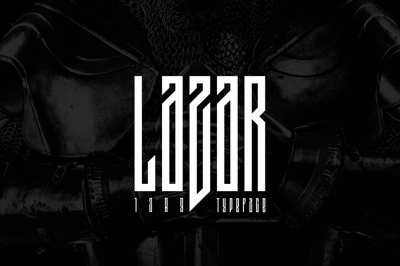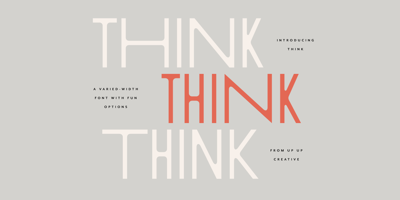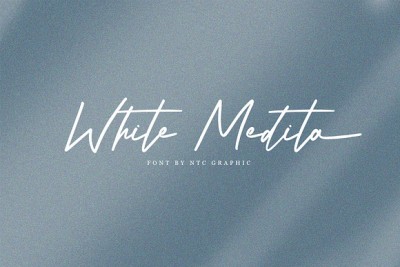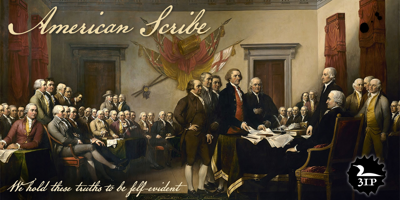Brush Fonts vs Handwritten Fonts: What's the Difference?
Brush Fonts vs Handwritten Fonts: What's the Difference?
In the diverse landscape of American typography, brush fonts and handwritten fonts often get lumped together as "script" or "decorative" options, but understanding their distinct characteristics and applications can dramatically improve your design decisions and brand communication effectiveness. While both font categories suggest human creativity and personal touch, they serve different purposes, evoke different emotions, and work best in entirely different contexts.
For American designers and business owners navigating the explosion of authentic, human-centered design trends, knowing when to choose brush fonts versus handwritten fonts can mean the difference between typography that perfectly captures your brand personality and fonts that send confusing or inappropriate messages to your target audience.
This comprehensive guide breaks down the key differences between brush fonts and handwritten fonts, examining their unique characteristics, psychological impacts, and optimal applications to help you make informed typography decisions that enhance your design projects and business communications.
Understanding Brush Fonts: Power and Expression
The Tool Defines the Aesthetic
Brush fonts derive their character from the physical properties of brushes, markers, and paint tools that create distinctive thick-to-thin stroke variations, organic edges, and dynamic energy that suggests immediate, confident creation. Unlike precise pen strokes, brush tools create letterforms that feel bold, expressive, and intentionally artistic.
The defining characteristics of brush fonts include dramatic stroke weight variation within individual letters, slightly rough or textured edges that suggest physical brush fibers, and confident, sweeping strokes that convey energy and movement. These features create typography that feels dynamic and purposeful rather than casual or spontaneous.
American graphic design traditions have long embraced brush lettering for contexts requiring visual impact and artistic flair. From 1950s advertising campaigns to contemporary craft brewery branding, brush fonts provide the bold expressiveness that commands attention while suggesting creative authenticity and human craftsmanship.
Energy and Confidence Communication
Brush fonts consistently project energy, confidence, and creative boldness that appeals to American audiences seeking authentic, impactful visual experiences. The tool-specific characteristics of brush lettering suggest decisiveness and artistic skill rather than casual communication or personal intimacy.
This psychological impact makes brush fonts particularly effective for brands and projects requiring strong visual presence and creative credibility. The bold stroke variations and confident letter construction suggest expertise and intentional artistic expression rather than spontaneous personal communication.
Research conducted among American consumers reveals that brush fonts trigger associations with artistic skill, creative industries, and bold brand personalities, making them powerful tools for businesses seeking to project confidence and creative leadership.
Scale and Impact Optimization
Brush fonts perform exceptionally well at larger sizes where their distinctive stroke variations and textural qualities can be fully appreciated. The bold, confident character of brush lettering works perfectly for headlines, logos, and display applications requiring maximum visual impact.
However, brush fonts can become problematic at smaller sizes where their distinctive characteristics may compromise readability or appear cluttered. The dramatic stroke weights and textural details that make brush fonts compelling at large sizes can create legibility issues when reduced for body text or fine print applications.
Understanding Handwritten Fonts: Intimacy and Authenticity
Personal Communication Aesthetics
Handwritten fonts replicate the characteristics of actual human handwriting, emphasizing the personal, intimate qualities that distinguish individual writing styles from formal typography. These fonts prioritize the subtle imperfections, natural letter connections, and personal quirks that make handwriting feel authentically human.
The defining features of handwritten fonts include consistent stroke weights that suggest pen or pencil tools, natural letter connections and ligatures that mimic actual writing flow, and subtle imperfections that feel genuinely personal rather than artificially distressed or deliberately stylized.
Unlike brush fonts that emphasize artistic expression and bold impact, handwritten fonts focus on replicating the intimate, personal quality of actual human correspondence. This fundamental difference in purpose creates entirely different psychological effects and optimal applications.
Trust and Personal Connection
Handwritten fonts consistently generate feelings of trust, personal attention, and authentic communication among American consumers increasingly skeptical of corporate messaging and digital impersonality. The subtle imperfections and natural flow of handwritten typography suggest genuine human involvement rather than mass-produced marketing.
This psychological impact proves particularly valuable for service businesses, personal brands, and companies seeking to build intimate customer relationships rather than broad market awareness. Handwritten fonts excel at creating feelings of personal attention and individual care that larger, corporate competitors cannot easily replicate.
Studies of American consumer behavior reveal that handwritten fonts increase perceived trustworthiness and personal connection, particularly among demographics valuing authentic experiences and personal relationships over corporate efficiency.
Readability and Extended Use
Well-designed handwritten fonts often provide better readability for extended text compared to brush fonts, as they replicate the natural flow and proportions that make actual handwriting practical for longer communications. The consistent stroke weights and natural letter spacing of handwritten fonts support comfortable reading experiences.
However, handwritten fonts must be chosen carefully to ensure they maintain readability across different sizes and applications. Overly stylized or decorative handwritten fonts can compromise legibility just as significantly as poorly implemented brush fonts.
Key Visual Differences and Identification
Stroke Weight Characteristics
The most immediate visual difference between brush and handwritten fonts lies in stroke weight variation. Brush fonts feature dramatic thick-to-thin transitions within individual letters, creating dynamic contrast that suggests the physical properties of brush tools applying varying pressure to create different line weights.
Handwritten fonts typically maintain more consistent stroke weights throughout letterforms, replicating the natural consistency of pen or pencil writing where pressure variations are subtle rather than dramatic. This consistency creates the readable, approachable character that defines effective handwritten typography.
Edge Quality and Texture
Brush fonts often display slightly rough or textured edges that suggest the physical interaction between brush fibers and writing surfaces. These textural qualities add to the authentic, handcrafted appeal while creating distinctive character that sets brush fonts apart from more precise typography options.
Handwritten fonts usually feature cleaner, more precise edges that replicate the smooth flow of ink or graphite on paper. While some handwritten fonts incorporate subtle texture to enhance authenticity, the overall effect emphasizes clarity and readability rather than artistic texture.
Letter Construction and Flow
Brush fonts frequently feature bold, confident letter construction with sweeping strokes and dramatic curves that suggest artistic intention and creative expression. The letter forms often appear more constructed and deliberate, emphasizing visual impact over natural writing flow.
Handwritten fonts prioritize natural letter connections and writing flow that replicates actual handwriting patterns. The letters connect and flow in ways that feel authentic to natural writing movements rather than artistic interpretation or stylistic enhancement.
Application Contexts and Best Practices
When to Choose Brush Fonts
Brush fonts excel in applications requiring bold visual impact, creative credibility, and artistic flair. They work particularly well for:
Artistic and Creative Industries: Design studios, art galleries, creative agencies, and artistic professionals benefit from brush fonts that immediately communicate creative expertise and artistic sensibility.
Food and Beverage Branding: Restaurants, craft breweries, artisanal food producers, and culinary businesses use brush fonts to suggest handcrafted quality and creative culinary approaches.
Bold Marketing Campaigns: Advertising campaigns requiring attention-grabbing headlines and memorable visual impact benefit from brush fonts' confident, energetic character.
Event and Festival Graphics: Music festivals, art shows, and cultural events use brush fonts to create excitement and suggest authentic creative experiences.
When to Choose Handwritten Fonts
Handwritten fonts work best for applications emphasizing personal connection, trust building, and intimate communication:
Service Businesses: Professional services, healthcare providers, and personal service businesses use handwritten fonts to suggest individual attention and personal care.
Wedding and Personal Events: Wedding vendors, personal celebration services, and intimate event planning benefit from handwritten fonts that suggest personal attention and special occasion importance.
Testimonials and Personal Stories: Customer testimonials, personal narratives, and authentic brand stories work well with handwritten fonts that suggest genuine personal experience.
Educational and Nonprofit Communications: Organizations seeking to build trust and personal connection often benefit from handwritten fonts that suggest genuine care and personal investment.
Industry-Specific Considerations
Fashion and Lifestyle Brands
Fashion brands face unique challenges in choosing between brush and handwritten fonts, as both can suggest authenticity and creative expression but appeal to different market segments and brand positioning strategies.
Luxury Fashion: Often favors brush fonts for their artistic sophistication and bold visual impact that suggests creative design leadership and artistic expertise.
Accessible Fashion: Frequently chooses handwritten fonts for their approachable, personal character that suggests individual style and personal expression.
Food and Beverage Industry
The food industry provides excellent examples of strategic font category selection based on brand positioning and target audience characteristics.
Fine Dining: Often employs brush fonts to suggest culinary artistry and creative expertise that justifies premium pricing and positions chefs as artists.
Casual Dining: Frequently uses handwritten fonts to suggest home-style cooking and personal attention that creates comfort and familiarity.
Creative and Professional Services
Service industries must balance creative credibility with professional competence, making font choice particularly strategic for business success.
Creative Agencies: Typically favor brush fonts that immediately communicate artistic capability and creative leadership to potential clients seeking innovative solutions.
Professional Consultants: Often choose handwritten fonts that suggest personal attention and individual service while maintaining enough professionalism for business credibility.
Digital Implementation Considerations
Performance and Technical Requirements
Both brush and handwritten fonts present unique technical challenges for digital implementation, particularly in web and mobile applications where performance and readability across devices become crucial.
File Size and Loading: Brush fonts with complex texture details may require larger file sizes that impact website loading performance, while handwritten fonts often optimize more efficiently for web use.
Screen Rendering: Handwritten fonts typically render more consistently across different devices and screen resolutions, while brush fonts may lose important textural details on lower-resolution displays.
Accessibility Compliance: Both font categories require careful consideration of accessibility standards, with handwritten fonts often providing better compliance options for extended reading applications.
Combining Brush and Handwritten Fonts
Strategic Font Pairing
Some projects benefit from combining brush and handwritten fonts strategically, using each category where it provides maximum effectiveness while maintaining overall design coherence.
Hierarchy Creation: Use brush fonts for bold headlines requiring attention and impact while employing handwritten fonts for supporting text that needs personal connection and readability.
Brand Storytelling: Combine brush fonts for artistic brand elements with handwritten fonts for personal customer communications, creating comprehensive brand systems that address different communication needs.
Content Differentiation: Use brush fonts for promotional content requiring bold impact while reserving handwritten fonts for testimonials, personal stories, and intimate customer communications.
Future Trends and Evolution
Technology and Font Development
Advancing font technology continues to blur the lines between brush and handwritten fonts while enhancing the authentic qualities that make both categories appealing to contemporary American design trends.
Variable Font Integration: New variable font technologies enable dynamic adjustment of brush texture intensity or handwritten casualness, providing unprecedented flexibility for responsive design applications.
AI and Machine Learning: Emerging technologies create increasingly sophisticated brush and handwritten fonts that capture authentic tool characteristics while optimizing for digital performance and accessibility requirements.
Understanding the differences between brush fonts and handwritten fonts enables more strategic typography decisions that align with your specific communication goals and audience expectations. Rather than viewing these as interchangeable "decorative" options, recognize them as distinct tools with unique strengths and optimal applications.
Whether you choose the bold artistic expression of brush fonts or the intimate personal connection of handwritten fonts, success lies in matching font characteristics to communication objectives while considering practical implementation requirements and audience preferences.
The most effective typography strategies often incorporate both categories strategically, using each where it provides maximum value while maintaining overall design coherence and brand consistency. By understanding these differences, you can create more authentic, effective visual communications that truly resonate with your American audience.





